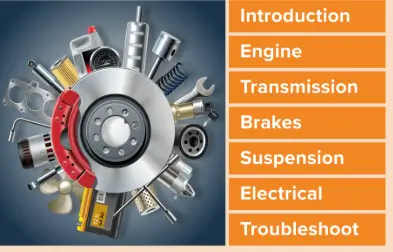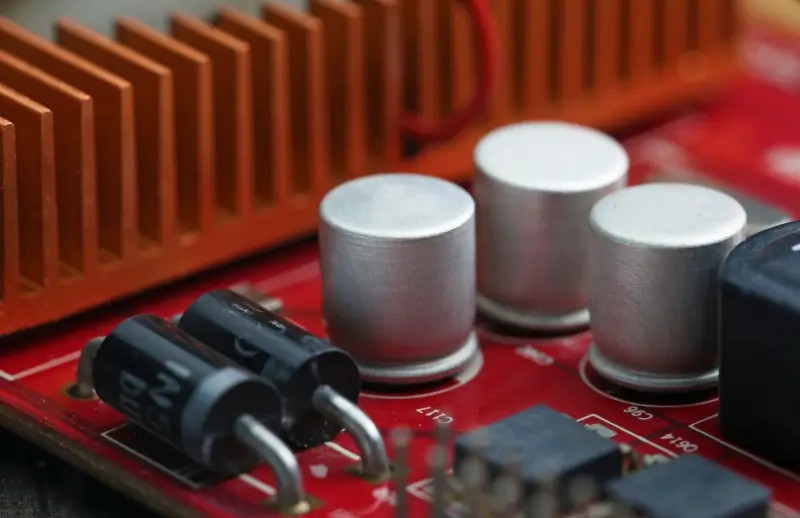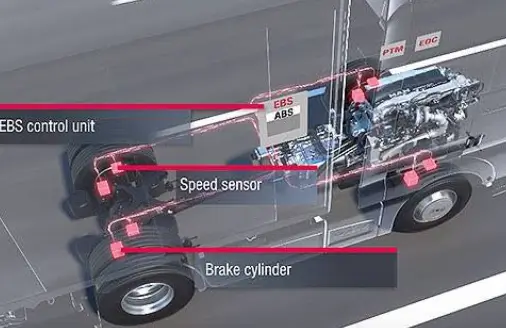Electronic Braking System Modern vehicles rely on sophisticated safety technology to protect drivers and passengers. The electronic-braking system represents one of the most significant advances in automotive safety over the past two decades. This comprehensive guide explains what is electronics braking system technology, how it works, and what you need to know when you see that dreaded “service electronic-braking system” warning on your dashboard.
What is Electronic Braking System Technology?
An electronic braking system (EBS) is an advanced brake management system that uses electronic controls and sensors to optimize braking performance. Unlike traditional hydraulic brakes that rely solely on mechanical pressure, the electronic braking integrates computer processors, sensors, and actuators to distribute braking force more efficiently across all wheels.
The braking system continuously monitors wheel speed, vehicle dynamics, and driver input to prevent wheel lockup and maintain vehicle stability during emergency stops. This technology has become standard equipment on most modern vehicles, particularly trucks and SUVs that require enhanced braking capability for heavy loads and challenging driving conditions.
Core Components:
The electronic braking system consists of several integrated components working together:
Electronic Control Unit (ECU): The brain of the system that processes sensor data and makes split-second braking decisions. This computer module receives inputs from multiple sensors and calculates the optimal braking force for each wheel.
Wheel Speed Sensors: These sensors monitor the rotational speed of each wheel, allowing the electronic-braking system to detect when a wheel is about to lock up or lose traction.
Hydraulic Control Unit: This component modulates brake pressure to individual wheels based on commands from the ECU, ensuring balanced braking performance.
Brake Pressure Sensors: These measure the force applied to the brake pedal and communicate driver intent to the electronics braking system.
ABS Pump and Valves: These components rapidly adjust hydraulic pressure to prevent wheel lockup during hard braking events.
How Electronic Braking-Systems Work
Understanding how the electronic-braking system functions helps explain why it’s so effective at preventing accidents. When you press the brake pedal, the system doesn’t just apply equal force to all four wheels like traditional brakes.
Instead, the electronic braking system performs these actions in milliseconds:
- Input Detection: Sensors measure how hard and fast you press the brake pedal
- Speed Monitoring: Wheel speed sensors report the rotational speed of each wheel
- Traction Analysis: The ECU calculates which wheels have optimal grip
- Force Distribution: The system applies more or less brake pressure to each wheel based on traction conditions
- Continuous Adjustment: The electronic-braking system makes constant micro-adjustments throughout the braking event
This intelligent brake management prevents wheel lockup on slippery surfaces, reduces stopping distances, and maintains steering control during emergency maneuvers. The electronics-braking system can pulse the brakes up to 15 times per second—far faster than any human driver could manually pump the brakes.
Service Electronic Braking System Warning: What It Means

When your dashboard displays a “service electronics-braking system” message, it indicates the system has detected a malfunction that requires attention. This warning should never be ignored, as it directly affects your vehicle’s primary safety system.
What Does Service Electronic-Braking System Mean?
The service electronics braking system warning means one or more components within the brake management system has failed, is malfunctioning, or is receiving incorrect sensor data. When this warning appears, your vehicle may revert to conventional braking mode, losing the enhanced safety features the electronic-braking system provides.
Common triggers for the service electronic braking system warning include:
Faulty Wheel Speed Sensors: Damaged or dirty sensors can send incorrect data to the ECU, triggering the warning light. Road debris, corrosion, or sensor wear commonly cause these failures.
Low Brake Fluid: Insufficient brake fluid affects hydraulic pressure, causing the electronics braking system to detect abnormal operating conditions.
Electrical Problems: Corroded connectors, damaged wiring, or battery voltage issues can interrupt communication between electronic-braking system components.
ABS Pump Failure: The hydraulic control unit can fail due to internal wear or electrical problems, preventing proper brake pressure modulation.
ECU Malfunctions: The electronic control unit itself can develop software glitches or hardware failures that trigger the service warning.
Brake Switch Issues: A faulty brake light switch can send incorrect signals to the electronics-braking system, confusing the ECU about brake pedal position.
Ram 1500 Service Issues
Ram truck owners frequently encounter electronic-braking system warnings, particularly in certain model years. The service electronic-braking system Ram 1500 warning has become a common concern among truck enthusiasts and daily drivers alike.
Common Ram 1500 Service Braking System Problems
Ram 1500 trucks from model years 2015-2019 show higher rates of electronic-braking system warnings. The Ram 1500 service electronic braking system issue often stems from specific design vulnerabilities unique to these vehicles.
Wheel Speed Sensor Vulnerability: Ram 1500 trucks frequently experience wheel speed sensor failures due to exposure to road salt, mud, and debris. The sensor mounting location makes them particularly susceptible to environmental damage.
Brake Fluid Contamination: The Ram 1500 electronic-braking system is especially sensitive to brake fluid quality. Moisture contamination can trigger false warnings even when brake fluid levels appear normal.
Wiring Harness Corrosion: The service electronic braking Ram 1500 warning often results from corroded wiring connections near the ABS module, particularly in regions with harsh winter conditions.
ABS Module Programming: Some Ram 1500 models require software updates to address electronic-braking system calibration issues that cause intermittent warnings.
Ram owners reporting the service electronics-braking system Ram 1500 warning should have the vehicle scanned for diagnostic trouble codes immediately. Common codes include C121C (Brake Fluid Level Sensor), C2200 (Wheel Speed Sensor Circuit), and U0121 (Lost Communication with ABS Control Module).
2018 Ram 2500 Service Electronic Braking Specific Issues
The 2018 Ram 2500 service electronics braking system warning has generated numerous owner complaints and dealer service visits. Heavy-duty trucks like the Ram 2500 place additional stress on braking components due to towing capacity and vehicle weight.
Why the 2018 Ram 2500 Experiences EBS Problems
The 2018 ram 2500 service electronic braking system issue frequently involves the ABS control module and wheel speed sensor circuitry. Several factors contribute to these problems:
Increased Electrical Load: The 2018 Ram 2500 features numerous electronic systems competing for electrical power, which can cause voltage fluctuations affecting the electronic- braking system.
Towing Stress: When towing heavy trailers, the electronics braking system works harder to manage increased braking demands, potentially exposing weak components.
Environmental Exposure: The 2018 Ram 2500’s undercarriage components face extreme conditions including road salt, mud, water crossings, and temperature extremes that accelerate sensor degradation.
Owners experiencing the 2018 ram 2500 service electronic-braking system warning should document when the warning appears—whether during normal driving, when towing, during cold starts, or after specific weather conditions. This information helps technicians diagnose intermittent problems.
Technical Service Bulletins for 2018 Ram 2500

FCA (now Stellantis) has issued technical service bulletins addressing some 2018 ram 2500 service electronic braking system concerns. Bulletin 05-003-19 REV.B addresses intermittent ABS/EBS warnings related to wheel speed sensor signal quality. Dealers can reflash the ABS module with updated software to resolve some phantom warning conditions.
Diagnosing Problems:
When facing a service braking system warning, proper diagnosis is essential before spending money on repairs. The electronics braking system stores diagnostic trouble codes that pinpoint the specific malfunction.
DIY Diagnostic Steps
Step 1: Check Brake Fluid Level: Low brake fluid is the most common trigger for braking system warnings. Open the hood and inspect the brake fluid reservoir. If fluid is below the “MIN” line, the electronic braking system will activate its warning.
Step 2: Inspect Wheel Speed Sensors: Visually examine all four wheel speed sensors for obvious damage, loose connections, or debris buildup. Clean any mud or metallic particles from the sensor tips.
Step 3: Scan for Trouble Codes: Use an OBD-II scanner with ABS capability to retrieve stored codes. Generic code readers often cannot access braking system codes, so ensure your scanner specifically supports ABS/EBS systems.
Step 4: Check Battery Voltage: The electronics braking system requires stable electrical power. Test battery voltage with the engine running—it should read 13.5-14.5 volts. Low voltage can cause false EBS warnings.
Step 5: Inspect Brake Components: Look for worn brake pads, damaged rotors, or leaking brake lines. While these issues may not directly cause electronic braking warnings, they can trigger related safety system alerts.
Professional Diagnosis Requirements
Complex electronic braking system problems require professional diagnostic equipment. Technicians use factory scan tools that can:
- Perform bidirectional tests (activating individual valves and pumps)
- Graph sensor data in real-time to identify intermittent problems
- Compare wheel speed sensor outputs simultaneously
- Access manufacturer-specific diagnostic procedures
- Reflash ECU software when updates are available
When bringing your vehicle to a shop for service electronic-braking system diagnosis, choose technicians with specific electronics braking system training and proper diagnostic tools.
Repairing Problems:
Repair costs for braking system issues vary dramatically depending on the root cause. Understanding typical repair scenarios helps you budget appropriately.
Common Repairs and Costs
Wheel Speed Sensor Replacement: $150-$300 per sensor including labor. The electronic braking system uses four wheel speed sensors, but typically only one fails at a time.
ABS Control Module Replacement: $800-$1,500 including programming. Some modules can be repaired or remanufactured for lower cost.
Brake Fluid Flush: $100-$150. This simple service often resolves electronic braking system warnings triggered by contaminated fluid.
Wiring Repair: $200-$600 depending on location and damage extent. Corroded connectors or damaged wiring harnesses require careful repair to ensure reliable electronic-braking system operation.
Hydraulic Control Unit: $1,200-$2,000. This expensive component rarely fails but requires replacement when internal valves or pumps malfunction.
Preventive Maintenance:
Regular maintenance extends electronic braking life and prevents expensive failures:
Brake Fluid Service: Replace brake fluid every 30,000 miles or 3 years. Fresh fluid prevents internal corrosion and maintains proper electronic braking system operation.
Sensor Cleaning: During tire rotations, have technicians clean wheel speed sensors to prevent debris-related failures.
Electrical System Maintenance: Keep battery terminals clean and tight. Test battery and alternator annually to ensure stable voltage for the braking system.
Software Updates: Check with your dealer periodically for electronic-braking system software updates that address known issues.
Electronics Braking System vs Traditional Brakes
Understanding the differences between electronic braking and conventional brakes highlights why modern vehicles use this advanced technology.
Advantages of Electronics Braking Systems
Superior Stopping Power: The braking system optimizes brake force distribution, reducing stopping distances by up to 20% compared to conventional brakes in emergency situations.
Enhanced Stability: By preventing wheel lockup, the electronic braking system maintains steering control during panic stops—critical for accident avoidance.
All-Weather Performance: The braking system automatically compensates for slippery conditions, providing consistent braking regardless of road surface.
Reduced Brake Wear: Intelligent force distribution means brake pads and rotors wear more evenly, extending component life.
Integration with Safety Systems: The electronic-braking system serves as the foundation for advanced features like automatic emergency braking, stability control, and traction control.
Limitations to Consider
Complexity: The electronic braking contains more components that can fail, potentially increasing long-term maintenance costs.
Repair Costs: Electronic braking system components are more expensive than traditional brake parts, and repairs require specialized diagnostic equipment.
Driver Adaptation: Some drivers find the braking system’s pedal feel different from conventional brakes, requiring an adjustment period.
Frequently Asked Questions

Can I drive with a service braking system warning?
You can drive, but should minimize driving and seek service immediately. When the warning appears, you lose advanced safety features, though basic braking typically still functions. However, some failures can affect overall braking performance, making driving dangerous.
How often should electronic-braking system components be replaced?
With proper maintenance, electronic braking components can last 100,000+ miles. Wheel speed sensors typically fail first (60,000-100,000 miles), while the ABS module often lasts the vehicle’s lifetime. Regular brake fluid changes significantly extend electronics braking system component life.
Will aftermarket wheels affect my electronic braking system?
Wheels with incorrect offsets can interfere with wheel speed sensors, triggering service electronic-braking system warnings. Always ensure aftermarket wheels maintain proper clearance from brake components and sensors.
Does the electronics braking system work when the vehicle is off?
No, the electronic braking requires electrical power and only operates when the ignition is on. However, basic hydraulic braking always functions regardless of electrical system status.
Can I disable the electronic braking system?
Modern vehicles don’t allow disabling the raking system, as it’s integrated with federally-required safety equipment. Even if you could disable it, doing so would compromise vehicle safety and potentially violate regulations.
What’s the difference between ABS and EBS?
ABS (Anti-lock Braking System) is a component of the broader braking system. The electronic braking system includes ABS plus additional features like electronic brake force distribution, brake assist, and integration with stability control systems.
Conclusion:

The electronic braking system represents sophisticated technology that significantly improves vehicle safety. Understanding what is electronics braking system technology, recognizing service electronics braking system warnings, and performing preventive maintenance ensures this critical safety feature protects you reliably for years.
For Ram truck owners, particularly those with Ram 1500 and 2018 Ram 2500 models, staying vigilant about electronic-braking system warnings and addressing issues promptly prevents minor problems from becoming expensive failures. Regular brake fluid service, keeping sensors clean, and maintaining proper electrical system health are the keys to long electronic braking system life.
When the service electronics braking system warning appears, don’t panic—but don’t ignore it either. Prompt diagnosis and repair restore full braking capability and peace of mind. Whether you’re towing heavy loads in your Ram 2500 or commuting in your Ram 1500, a properly functioning electronics braking system is your first line of defense in emergency situations.
Remember, what does service electronic braking system mean? It means your vehicle is asking for attention to maintain the advanced safety features that protect you and your passengers every time you drive. Treat these warnings with the urgency they deserve, and your electronics braking system will serve you reliably for many years and miles ahead.

